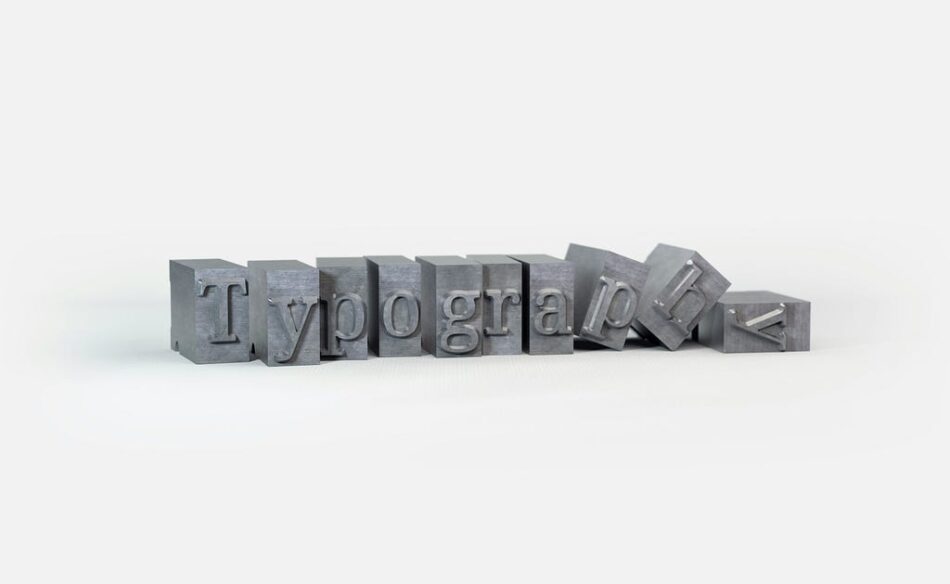Advocating for fairness in the design industry.
Image from Florian Klauer
No need to remind you, fonts are everywhere. They silently shape our perception of brands, products, and messages. Alongside colors and images, they form the holy trinity of visual communication. Fonts don’t just convey words; they evoke feelings and convey messages with clarity.
Designers love fonts, but they, and their clients, often overlook font licensing. This oversight is not just risky for the design industry; it’s also unfair to font creators, who deserve recognition and compensation for their work. It’s curious that while people are aware of licensing for music, photos, and videos, font licensing often flies under the radar. Why the double standard?
Designers vs designers
It’s a curious paradox in the design world: graphic designers, who inherently understand the importance of being compensated for their creative efforts, often overlook the crucial aspect of font licensing.
Type designers put in just as much sweat and tears, yet font licensing seems to be the elephant in the room. They’re basically two peas in a pod, both sharing the same design background and passion.
Graphic designers and type designers: same but different
Designing a font isn’t a walk in the park; it’s more like a marathon of creativity, taking months or even years to perfect every curve and stroke. So, why the radio silence on font licensing? Let’s shine a spotlight on the unsung heroes of type design and give them the recognition they deserve!
End-user unawareness
When you buy a font, you’re not just snagging the letters — you’re getting a whole package deal called a font license. This agreement, known as an End User License Agreement (EULA), spells out what you can and can’t do with the font. Surprisingly, it’s often the client, not the designer, who needs to wrap their head around this. Explaining the importance of font licensing to clients isn’t an easy task. Unlike with photos or videos, where clients get the hustle behind the scenes, the intricate art of typeface creation often flies under the radar.
This knowledge gap highlights/stresses an underlying need for greater awareness and education regarding the substantial labor and expertise invested in type design.
Font licenses are all over the place
Font licensing is like a wild maze, full of twists and turns. Different foundries and distributors have their own rules and pricing, leaving users scratching their heads. Terms like “desktop license” might make sense to font pros, but they’re a foggy forest to the uninitiated.
This confusion doesn’t just make life hard for legit users; it’s also a goldmine for font pirates. When folks can’t make heads or tails of font licenses, they might resort to shady tactics to get what they need, hurting foundries in the process. Plus, keeping track of licenses? That’s a whole other headache. With rules changing from font to font, it’s easy to get lost in the shuffle.
Confused end-user
Font license infringements and legal repercussions
Font license infringement is a biggie, making up over 50% of online font use. It’s not just a problem for foundries; it messes with the whole market! Foundries have to factor in infringement when pricing fonts, which isn’t fair to legit users. This merry-go-round of lost revenue and higher prices screams for a crackdown on font infringements.
The repercussions of using fonts without proper licenses can lead to severe legal consequences, as exemplified by various high-profile cases:
In 2017, the font maker Hype for Type sued Universal Music Group for $1.25 million over the unauthorized use of their font in the Vamps logo.Font Bureau clashed with NBC in 2009 over font licensing issues for $2 million.Another notable case occurred in 2016 when Font Bros sued Hasbro over alleged font misuse in My Little Pony merchandise (asking for $150,000 per infringement).
These examples underscore the significant financial liabilities and reputational damage that can arise from font license infringement, highlighting the importance of adhering to proper licensing practices.
Font license enforcement
Is font license infringement running wild because enforcement is too soft? Even with legal battles and big payouts, people keep using fonts without permission. As the font world grapples with this mess, it’s time to amp up their game in protecting intellectual property rights.
Solutions like Font Radar are on the case, tracking down font license infringements to safeguard type designers’ hard work. Font Radar’s got foundries back with advanced tech and legal experts to keep font license infringers at bay while educating users about font licenses.
Despite their efforts to uphold the integrity of font licensing, these initiatives often face resistance from users attempting to skirt the requirement of paying for the appropriate license corresponding to their usage. But these solutions are a step towards fortifying intellectual property rights within the design industry.
Font Radar’s team tackling font piracy
Be fair, purchase your font licenses
It’s crucial for users to exercise caution and diligence when acquiring fonts to ensure they’re properly licensed. If caught using a font without the right license, it’s essential to take responsibility and rectify the mistake by obtaining the necessary licensing.
Upholding ethical practices not only preserves the integrity of intellectual property rights but also sustains the livelihoods of talented type designers. Moreover, rampant font piracy isn’t just a harmless shortcut — it’s like shooting ourselves in the foot. By undermining the font industry, we risk limiting the variety and quality of typefaces available in the long run.
As graphic designers, it’s in our best interest to support the industry that provides us with the tools (or toys, as some might say 
References:
Font licenses lawsuits:
https://www.insidersoftware.com/font-licensing-is-a-serious-issue/https://www.extensis.com/blog/the-font-files-when-piracy-and-noncompliance-lead-to-font-lawsuitshttps://www.fontfabric.com/blog/fonts-licensing-the-ins-and-outs-of-legally-using-fonts/
Example of users surprised they need to purchase a font license:
https://www.reddit.com/r/typography/comments/17qj2ut/fontfabric_licensing_issue/https://www.reddit.com/r/web_design/comments/186t3aj/emailed_about_unlicensed_font_use_will_i_be_sued/https://www.reddit.com/r/web_design/comments/uwuv0s/font_licensing_issue/https://www.reddit.com/r/Scams/comments/10l9yj0/im_being_harassed_by_a_company_called_fontradar/
When you like fonts but forget to purchase them was originally published in UX Collective on Medium, where people are continuing the conversation by highlighting and responding to this story.





